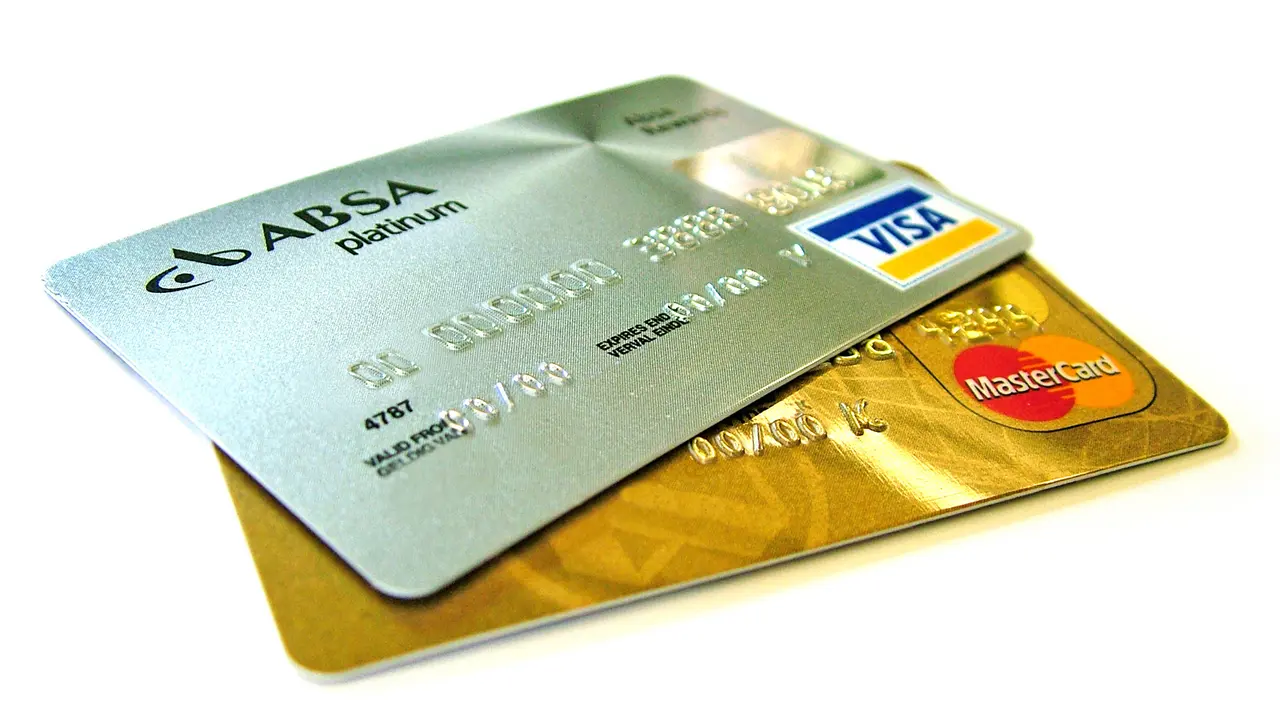Authorized User Benefits for Credit Building
Explore how becoming an authorized user can positively impact your credit score and accelerate your credit building journey.

Explore how becoming an authorized user can positively impact your credit score and accelerate your credit building journey.
Authorized User Benefits for Credit Building
Understanding the Authorized User Status and Credit Building
Hey there! Ever wondered if there's a shortcut to building good credit, especially if you're just starting out or trying to bounce back? Becoming an authorized user on someone else's credit card might just be that secret weapon. It's a pretty common strategy, but a lot of people don't fully grasp how it works or how to make the most of it. Essentially, an authorized user gets a card linked to someone else's account – usually a parent, spouse, or trusted friend – and can make purchases. But here's the cool part: the primary account holder is ultimately responsible for the bill, and in many cases, the payment history of that account can show up on the authorized user's credit report. This can be a huge boost, especially if the primary account holder has a long history of responsible credit use.How Being an Authorized User Can Boost Your Credit Score
So, how exactly does this magic happen? When you're added as an authorized user, the credit card company often reports the account's activity to the major credit bureaus (Experian, Equifax, and TransUnion) for both the primary cardholder and the authorized user. If the primary cardholder has a stellar payment history – always paying on time, keeping balances low – that positive information can then appear on your credit report. This can positively influence several key factors that make up your credit score:Payment History The Foundation of Good Credit
This is the big one, folks. Payment history accounts for a whopping 35% of your FICO score. If the primary cardholder has a long history of making on-time payments, that positive track record can be reflected on your report. It's like getting a head start on proving you're a reliable borrower, even if you've never had your own credit card before.Credit Utilization Ratio Keeping Balances Low
Your credit utilization ratio (CUR) is another massive factor, making up about 30% of your score. This is the amount of credit you're using compared to your total available credit. If the primary cardholder keeps their balance low relative to their credit limit, that low utilization can also be reported on your credit file. For example, if they have a $10,000 limit and only use $500, that's a 5% utilization – super healthy! This can help your overall CUR look better, even if you have other cards with higher balances.Length of Credit History The Older the Better
The age of your credit accounts (how long you've had credit) contributes about 15% to your score. If the primary account holder has an old, well-established credit card, becoming an authorized user on that account can instantly add that history to your report. This can significantly increase your average age of accounts, which is a big plus for your score.Credit Mix Diversifying Your Credit Portfolio
While less impactful than payment history or utilization, having a mix of different types of credit (like credit cards, installment loans, etc.) can be beneficial. Being an authorized user adds a revolving credit account to your profile, contributing to a healthier credit mix.Choosing the Right Primary Cardholder for Maximum Credit Boost
This isn't just about anyone with a credit card. You need to be strategic about who you ask to add you as an authorized user. Here's what to look for:Excellent Payment History A Non Negotiable
Seriously, this is the most important thing. If the primary cardholder has a history of late payments, high balances, or defaults, that negative information could also transfer to your credit report, doing more harm than good. You want someone who consistently pays their bills on time, every time.Low Credit Utilization Ratio A Key Factor
Ideally, the primary cardholder should be using less than 30% of their available credit on the card you'll be added to. Even better if it's below 10%! This ensures that the low utilization is reflected on your report, giving your score a nice bump.Long Credit History The Older the Account the Better
An account that's been open for many years with a good history is a goldmine. The longer the account's history, the more it can positively impact your average age of accounts.Trust and Communication Essential for Success
This goes without saying, but you need to trust this person implicitly. You're essentially linking your financial future to theirs, at least in terms of credit reporting. Open communication about the account's status, spending, and payments is crucial. You might even agree on whether you'll actually use the card or if it's purely for credit building purposes.Practical Steps to Becoming an Authorized User
So, you've found your ideal primary cardholder. What's next?Discuss Expectations and Responsibilities Clearly
Before anything else, have a frank conversation. Will you actually use the card? If so, what are the spending limits? How will you contribute to payments, if at all? Make sure everyone is on the same page to avoid misunderstandings down the line.Contact the Credit Card Issuer
The primary cardholder will need to contact their credit card company. This can usually be done online, over the phone, or sometimes even through their mobile app. They'll typically need to provide your name, date of birth, and sometimes your Social Security Number (SSN). While an SSN isn't always required to be added as an authorized user, it's often necessary for the account activity to be reported to your credit bureaus. Without it, the benefits to your credit score might be limited or non-existent.Monitor Your Credit Report
Once you're added, give it a month or two, then pull your credit report from all three major bureaus (Experian, Equifax, TransUnion). You can do this for free once a year at AnnualCreditReport.com. Check to see if the account is showing up on your report and if the information is accurate. If it's not there after a few months, the primary cardholder might need to follow up with the credit card company to ensure they're reporting authorized user activity.Potential Pitfalls and How to Avoid Them
While being an authorized user can be a fantastic tool, it's not without its risks. Being aware of these can help you navigate the process smoothly.Primary Cardholder Mismanagement
If the primary cardholder starts missing payments, maxing out the card, or closes the account, that negative activity could also appear on your credit report. This is why choosing someone with a proven track record of financial responsibility is paramount.Disputes and Removal
If things go south, you can request to be removed as an authorized user. The primary cardholder can also remove you. Once removed, the account should eventually drop off your credit report, though the timeline can vary. If negative information has already been reported, it might take some effort to dispute it, especially if it's accurate information from the primary account holder's mismanagement.Not All Lenders Report Authorized User Activity
While most major credit card issuers do report authorized user activity, some smaller banks or credit unions might not. Always confirm with the primary cardholder's issuer if they report authorized user data to all three credit bureaus, especially if your primary goal is credit building.Alternative and Complementary Credit Building Products
Being an authorized user is a great start, but it's often just one piece of the credit-building puzzle. To truly accelerate your journey, consider these other products and strategies:Secured Credit Cards A Stepping Stone to Unsecured Credit
Secured credit cards are fantastic for building credit, especially if you have no credit history or bad credit. You put down a deposit, which typically becomes your credit limit. This deposit minimizes the risk for the lender, making it easier to get approved. As you make on-time payments, the lender reports this activity to the credit bureaus, helping you build a positive payment history. After a period of responsible use (usually 6-12 months), many secured card issuers will 'graduate' you to an unsecured card and return your deposit.Recommended Secured Credit Cards:
- Discover it Secured Credit Card: This card is often praised for its rewards program (1-2% cash back on purchases) and for automatically reviewing your account after 7 months to see if you qualify for an unsecured card. It requires a minimum security deposit of $200.
- Capital One Platinum Secured Credit Card: Known for its flexible security deposit options ($49, $99, or $200 for a $200 credit line) and no annual fee. It's a solid choice for those with limited funds for a deposit.
- OpenSky Secured Visa Credit Card: Unique because it doesn't require a credit check, making it accessible to almost anyone. The minimum deposit is $200, and it has an annual fee of $35.
Credit Builder Loans A Unique Approach to Credit Building
Credit builder loans work a bit differently. Instead of getting the money upfront, the loan amount is held in a savings account or CD while you make monthly payments. Once the loan is paid off, you get access to the money. The lender reports your on-time payments to the credit bureaus, helping you build a positive payment history. It's a forced savings plan that also builds credit – a win-win!Recommended Credit Builder Loans:
- Self Credit Builder Account: This is one of the most popular options. You choose a loan amount (e.g., $500, $1,000) and a payment term (e.g., 12 or 24 months). Monthly payments range from about $25 to $150. Once paid off, the money is released to you. They also offer a secured credit card option after a few months of on-time payments.
- Credit Strong: Similar to Self, Credit Strong offers various credit builder loan options with different payment amounts and terms. They report to all three major credit bureaus.
:max_bytes(150000):strip_icc()/277019-baked-pork-chops-with-cream-of-mushroom-soup-DDMFS-beauty-4x3-BG-7505-5762b731cf30447d9cbbbbbf387beafa.jpg)






